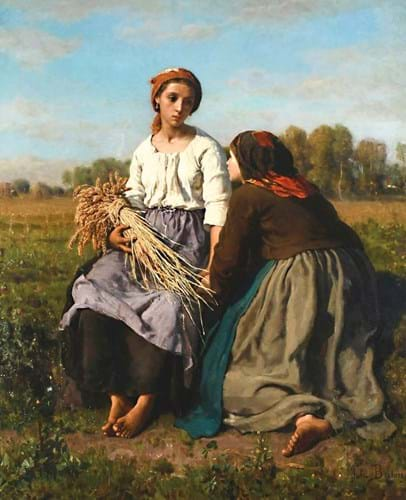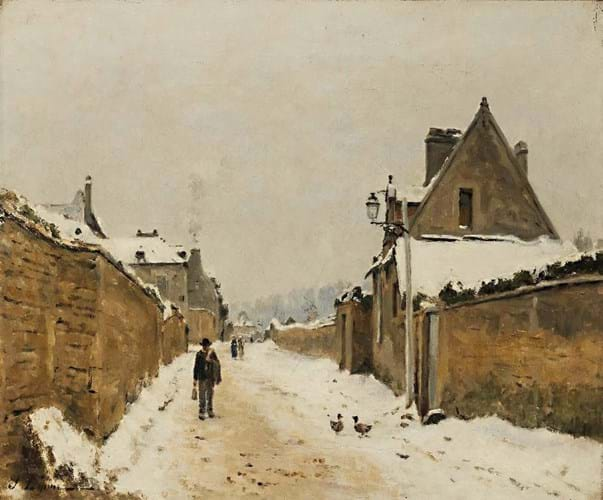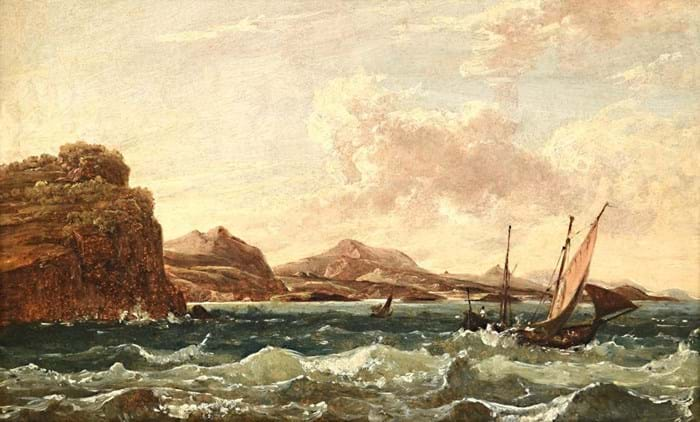The category of 19th century European pictures is among the broader sectors of the art market.
This is true both in relation to the geographical area covered and also in terms of the range of styles – stretching across the entire breadth of the continent and varying from traditional academic paintings to the first forays into Modernism.
Sometimes 19th century European art sales are considered the poor relation compared to the more valuable Impressionist & Modern category with which it crosses over (the first Impressionist exhibition in Paris took place in 1874, after all).
Nevertheless, this remains a diverse sector with plenty of areas of activity, even if demand has become more selective over recent decades as collectors increasingly focus on the most desirable material with market freshness and good condition becoming an ever more important prerequisites for success.
Thanks to a relatively abundant supply in the UK, numerous works in this category change hands at sales across the country every year and some notable examples have already appeared in London and the English regions so far in 2022.
Breton’s rural life
These included a French picture that came up at Woolley & Wallis’ (25% buyer’s premium) auction of Old Master, British & European Paintings on March 1-2.
A vintage painting of rural workers by French artist Jules Breton (1827-1906) was consigned from a vendor whose parents bought it from Pyms Gallery in London. It had last appeared at auction at Sotheby’s back in 1986 where it fetched £35,000.
Pictures of women in the fields harvesting bare-footed were a recurring subject for Breton whose depictions of rural workers became highly celebrated in their day – by the time of his death his reputation rivalled that of Eugène Delacroix and Jean-Auguste-Dominique Ingres.
Today, works by the artist appear regularly on the market largely because there are a quite lot of them about (he was a fairly prolific and had a career spanning six decades).
The 2ft 5in x 2ft (74 x 61cm) signed oil on canvas at the Salisbury auction was titled Two harvesters and was an attractively wistful composition. Estimated at £25,000-35,000, it drew a good amount of pre-sale interest which led to a decent competition.
It was knocked down at £32,000 to a private overseas buyer.
Although a credible sum for the artist for a work of this size in the current market, the fact that it made less than the 1986 price, back when the sector was significantly stronger, was a reminder of market realities.
In fact, the price was one of the highest for Breton in recent times.
The only work making more in the last year was a study for Les vendanges à Château-Lagrange, a major work now in the Joslyn Art Museum in the US, which sold twice during this period – first at Artcurial in June 2021 for €48,000 (£41,400) and then at Sotheby’s New York in January for $85,000 (£63,560).
Tooth provenance
A 19th century French picture also attracted interest at Roseberys’ (25% buyer’s premium) sale of works from the descendants of the family that ran the eminent dealership Arthur Tooth & Sons.
The view of a snowy street in Caen, Normandy, by Stanislas Victor Edouard Lépine (1835-92) was a characteristic scene of the artist’s hometown.
Along with depictions of Rouen and the banks of the Seine, it was his most common subject.
While brighter examples of the latter tend to be favoured commercially, this 16½ x 21in (42 x 54cm) signed oil on canvas had plenty going for it.
Although a relatively small picture with a muted palette, it was deemed one of the rarer works from the earlier part of Lépine’s career and a good example of his snowy townscapes.
It showed the influence of both his tutor Jean-Baptise Camille Corot (1796-1875) and his Impressionist contemporaries (Lépine participated at the first Impressionist exhibition at Nadar’s Galley in 1874 alongside Camille Pissarro, Claude Monet, Edgar Degas and Paul Cèzanne).
As well as the work’s good provenance and market freshness (it had been acquired when Arthur Tooth himself ran the family gallery), it was described as in ‘exceptional condition’ having not been touched over the years and came in its original Durand-Ruel frame.
Estimated at £15,000-20,000 at the auction in West Norwood on February 21, it drew plenty of interest and was knocked down at £40,000. It is now destined for a private collection.
The sum compared well with previous works of this size sold in recent times.
Just one work by Lépine has fetched more in the last two years according to Artprice: a larger marine painting that achieved €57,000 (£48,870) at Sotheby’s Paris in December 2021.
Farewell song
Meanwhile, Tennants (22% buyer’s premium) of Leyburn, North Yorkshire, offered a French picture that managed to generate significant competition despite some serious condition problems.
The interior with an elegant classically dressed figure mourning a songbird was by Jean-Baptist Bertrand (1823-87) and was described as ‘possibly depicting a lady of Pompeii’ in the catalogue.
The 3ft 9in x 23in (1.15m x 59cm) oil on canvas was signed and dated 1875 and came to auction from a Scottish private collection.
The condition report stated it was in ‘an overall distressed state of preservation’.
The canvas was loose on the stretcher and it had a large tear to the left of the lady’s head as well as another at the knee. It also had other surface scratches and abrasions as well as a milky varnish.
In short, it was a restoration project likely to interest the trade rather more than private buyers. Bertrand, though, retains an active following. He studied at the École des Beaux-Arts in Lyon from 1840-43 and first exhibited at the Paris salon in 1857.
He later travelled widely in Italy and produced allegorical and genre scenes including depictions of literary heroines which are some of his best-known works (some of which became popular engravings).
Bertrand has twice broken the £50,000 barrier at auction: once for a large nude titled Aurora that sold at Sotheby’s New York back in 1999 for a record $150,000 (£91,260) and then for a painting of Ophelia that made £78,000 at Christie’s in London in 2017.
Even in its far from ideal state, the £600-900 estimate at the sale on March 19 looked sure to attract bidders.
After a lively contest, it sold for £9000 to a member of the international trade.
While inevitably it would have made significantly more in better condition, the fact that it generated such competition gave encouragement for the market and showed the benefit of keeping a lid on estimates in this selective sector.
Seasoned traveller
A small picture of fishing boats off a rocky outcrop by German painter Franz Ludwig Catel (1778-1856) also attracted strong bidding in Leyburn. It came to auction as part of the contents of a private house in St Jude’s on the Isle of Man.
The painting had a label on the back for Sotheby, Parke, Bernet & Co of Ireland with a handwritten note stating that it had earlier provenance to Elizabeth Foster (later Duchess of Devonshire) and then the Vere-Foster family of Clyde Court in County Louth.
The 6½ x 10½in (17 x 27cm) oil on panel was a good but small example of a marine scene by the Berlin-born artist who enrolled at the Berlin Academy in 1797 before later attending the École des Beaux-Arts in Paris.
Travelling widely in France, Switzerland and Italy, he produced numerous detailed landscapes and figurative scenes which maintain a strong following particularly in his homeland.
While works emerge fairly often at auctions in Germany and Austria – where they have made up to the lofty €260,000 (£225,315) for a view of Palermo in Sicily sold at Dorotheum in Vienna in 2011 – they appear markedly less often in the UK, and it was rare to see one at an auction outside London.
Although the work at Tennants had a few condition issues with some thinning to the paint and retouching particularly to the sky, it drew strong interest against a £1000-1500 estimate.
On the day, it took £17,000 from a European private buyer.
The price looked relatively strong for a work of this size and was in fact ranked in the top handful of works by Catel sold in the UK.


















